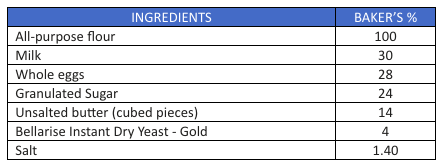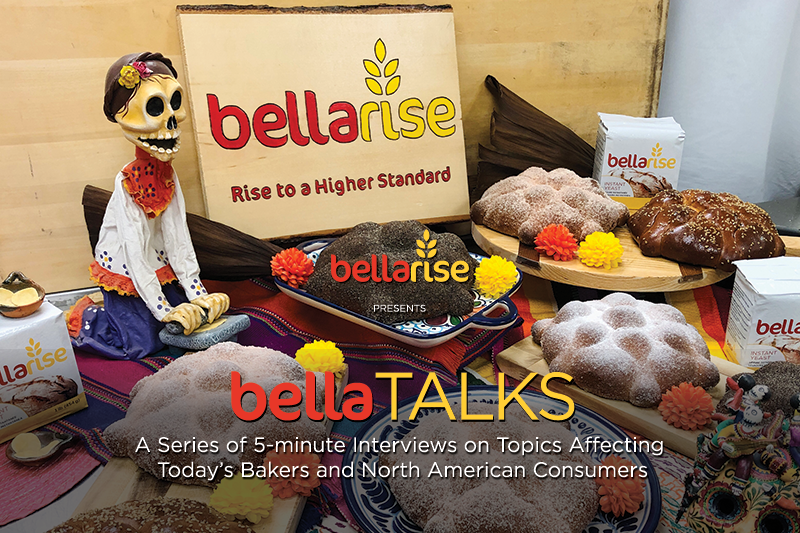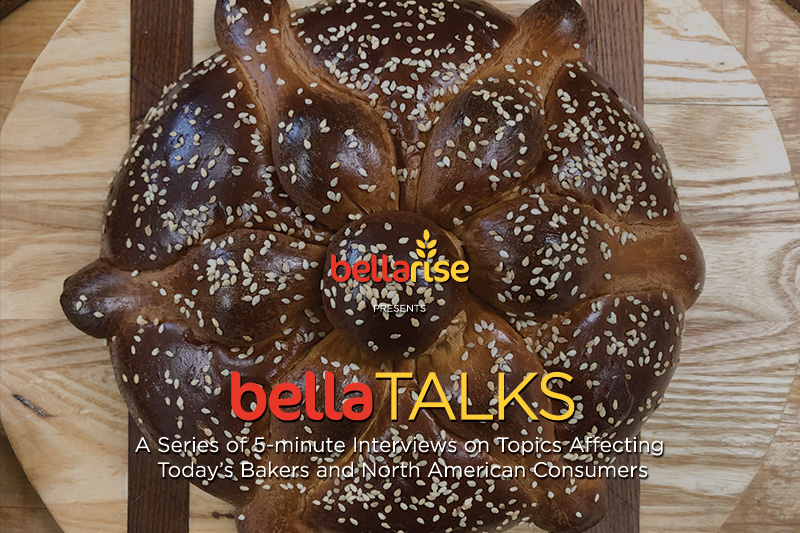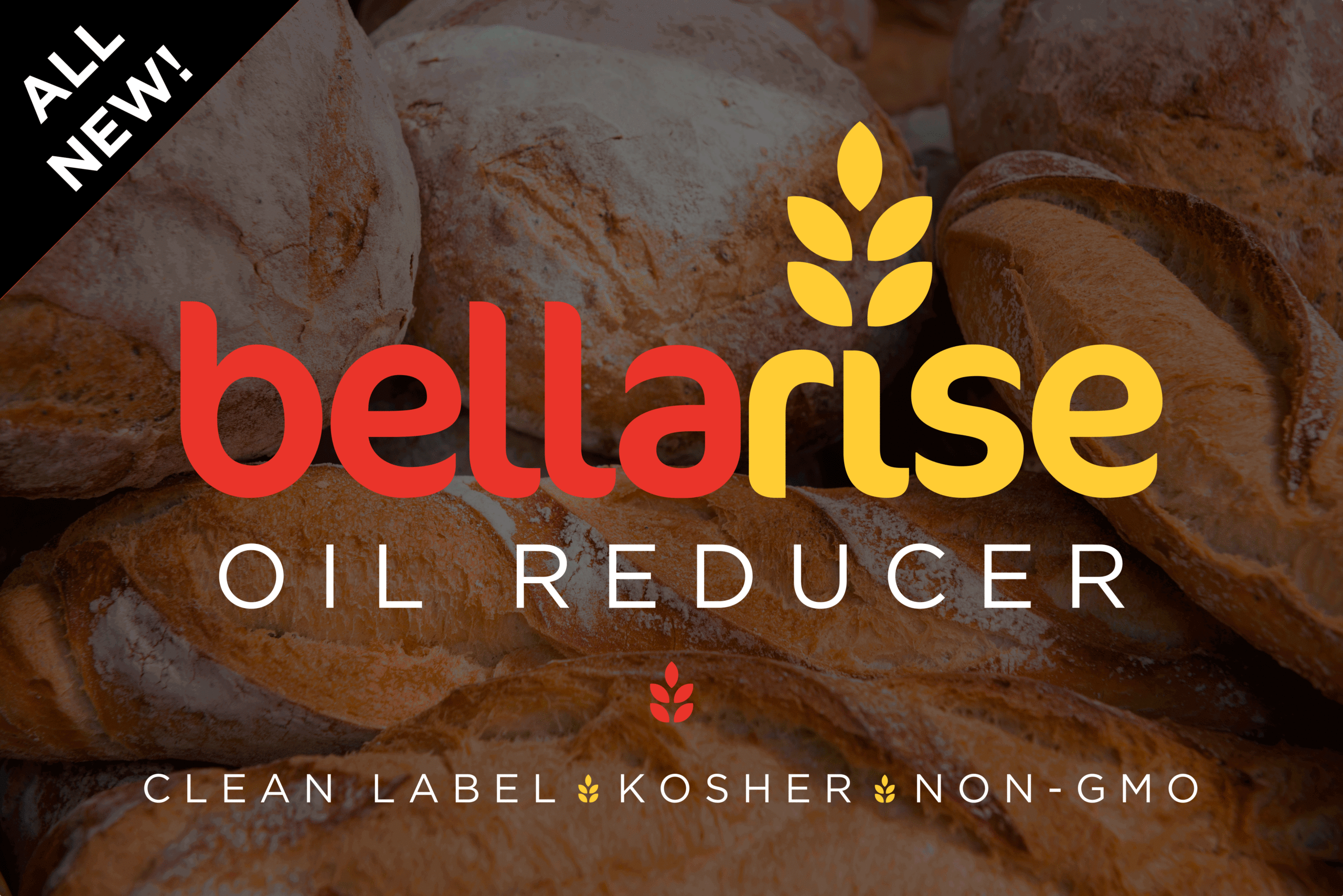PASADENA, CA, 30 October 2020 – Reality in 2020 is complicated, and the global pandemic has played a central role in disrupting millions of lives around the world. In many cases, Americans have simplified parts of their lives and taken up hobbies that provide much needed respite. Baking, which is one of humankind’s oldest arts, affords people the opportunity to prepare foods that can be simple and easy, or experimental and complex. Through these trying times, home baking is being embraced by more US consumers than in recent history, as it provides some much-needed “warmth” to families and bread lovers across the United States.
Done alone, or with someone special, baking can yield hours of joy that begin the moment that ingredients are chosen, and they last through to that slice of the day where you taste your first bite. An easy smile could surely follow, either because that freshly baked boule came out perfectly, or because the rookie artisan baker realized their bread was so bad that they couldn’t help but laugh!
How different, though, is home baking when compared to the bakeries that bring you the myriad of loaves found in bread aisles across America? When comparing home baking with industrial and commercial baking, there are glaring differences in approach and requirements. Mistakes at the industrial level are no laughing matter, while home baking allows for more “nuanced” results. All in all, home baking is a fun challenge, ranging from choosing the right yeast to mastering a specific process and even understanding a home kitchen’s ambient conditions.
Alex Peña, Director of Product Development and Technical Services at Bellarise®, is an accomplished baker who helped his father run their family bakery for decades, and when he is not baking at our Baketech Innovation Center, he is at home, baking his own masterpieces. Peña walks us through some of the differences between home baking and industrial baking, while offering additional insights for home bakers.
Home bakers, for instance, have much more room for nuance, and could even afford to take a more casual approach. “Baking at home, you have a far less controlled environment than you do at a commercial bakery, so your results from one bread to another may vary. And that’s ok, if you get the results you want! At home, you can even knead your ingredients, then walk the dog while your dough proofs,” says Peña.
Getting consistent results from one loaf to another is a big challenge for home bakers, too. For instance, “Your gluten matrix is developed more easily and evenly using industrial mixers because dough friction and temperature are more consistent at industrial bakeries, and more easily controlled. Mixing by hand at home can be less precise. Also, commercial and industrial bakeries have proof boxes set to specific parameters to ensure that breads are pulled out at a specific height and internal temperature before the dough goes into the oven. At home, you can cover your dough with a cloth or something else, or place it in an oven that’s turned off, to assist in the dough’s rising, though your results may vary. Those variances can result in some really special breads, so that’s not a bad thing!” Even the type of oven can play a role, as Peña uses a mid-century oven at home since he prefers a more “old-school” approach when baking at home. Industrial and commercial bakeries, on the other hand, typically use state-of-the-art ovens tuned for the production of consistent breads that are just as good as any batch produced on that line, every time.
The challenges involved in home baking are also part of what makes it fun, and the solutions that home bakers find along the way help them produce truly unique artisan creations. Peña talks about a few of them. “In addition to having to mix your dough properly and ensuring a consistent and strong gluten matrix, home bakers are also challenged to convert measurements, depending on the recipe they are using. Determining when the dough is ready to be placed in the oven – which goes along with proofing – is also something to consider when baking at home,” states Peña, then with a laugh, he adds, “I’ve even heard of people using a drier or a dishwasher as proofers! I have never tried any of those myself.” Aside from that, even ambient humidity and altitude play a key role.
“Baker’s instinct also kicks in,” says Peña towards the end of our talk. “Knowing when to pull something out of the oven, and knowing how to arrange
pieces on your tray, is something that a home baker will develop over time.” Even your choice of yeast can make a difference. “Bellarise® Instant Dry Yeast, which we craft for home bakers and artisan bakers, is always Non-GMO and raised on Non-GMO beet molasses, instead of the high-fructose corn syrup that other yeast producers use. When you’re looking to add something unique and special to your recipe, everything counts, and your yeast plays a crucial role in the quality of your end product,” adds Peña.
In many ways, home baking really does add “something unique and special” to the lives of bakers and bread lovers everywhere. “The scent of fresh baked bread is better than any scented candle you could buy,” says Peña with a smile. It is an activity that touches every sense; indeed, baking makes you feel alive. While he shares an anecdote with me, Peña walks me over to his work space and places a towel on his bench. He begins to fold it, showing me how he makes hojas, a Mexican pan fino that takes on a religious meaning, as it is often used to honor Mexico’s Virgin of Guadalupe. “Mexican bakers even as far back as the 16th century have used anything they could see to come up with different types of breads and their shapes, like hojas (leaves), tortugas (turtles), and ojos (eyes),” states Peña, as he emphasizes how home bakers, who are also artisan bakers by default, influence both baking culture and global culture at large.
Baking brings people together, and just as someone can say that something can be a great conversation piece, “I can tell you, that any bread you bake is a great conversation piece, and when you can break bread with someone else, there is nothing better to have with it than a great conversation.” Experimentation is just another fun aspect of baking at home. Through one more smile, Peña ends our conversation, stating, “By baking something on your own… your own creation… when you’re able to break bread that you made, with your family, it’s one of the best experiences you could have.”
In today’s trying times, we need more conversations, and more recipes for joy and camaraderie. Day after day, as more people in the U.S. either bake at home for the first time, return to an old hobby they enjoyed as children, or find more time to develop a craft they have always loved, people are finding their own ways to fill their homes with a little more love, one slice, one laugh, one conversation, at a time.
Part of our commitment to providing the baking industry with unparalleled baking ingredients, such as Bellarise® Instant Dry Yeast, is being ready to help bakeries across North America bake the best clean label, Non-GMO, and organic breads in the world. Contact us and let our Product Development Department know about your bakery’s clean label goals and challenges. We would gladly partner with you to find the right solutions and support your bakery’s efforts to craft the very best clean label breads in the market.
P.s, And now, for a recipe from our bakery at the Bellarise® Baketech Innovation Center to your kitchen! Enjoy this experiment in working with baker’s percentages!
- Using a dough hook add flour, Bellarise® Gold Instant Dry Yeast and sugar to bowl and mix on low to incorporate dry ingredients
- Add milk and eggs, continue to mix for 2 minutes on low speed
- Continue to mix for 4 minutes on low while adding butter pieces in increments
- Mix for 2 minutes on high speed
- Add salt and continue to mix for 2 minutes on high speed or until well developed and dough releases from sides of bowl
- Remove dough from mixing bowl and place in a greased bowl and cover with plastic or damp towel
- Give a 2 hour fermentation
- Punch down the dough, cover and give an additional 2 hour fermentation
- Remove dough from bowl and divide into 40 gram pieces
- Divide equivalent 12 gram pieces and set aside
- Round 40 gram pieces and place in sprayed brioche mold and cover with plastic or towel
- Give a 60 minute fermentation before adding smaller piece
- Give an additional 30 minute fermentation before applying egg wash
- Bake for 20 minutes at 350°F
- Remove from mold and let cool on wire rack









